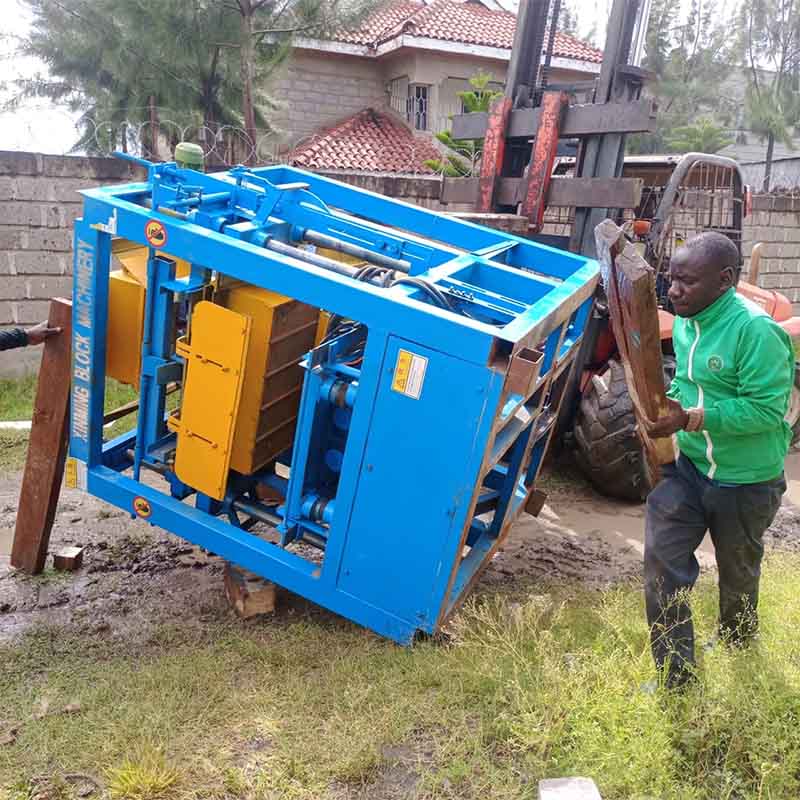
Image source Aiweiblockmachine
Building Information Modeling (BIM) is revolutionizing the construction industry, enabling improved collaboration, enhanced project management, and increased efficiency. This article explores the integration of BIM technology with block making machines, highlighting the benefits and potential it offers to the construction sector. By combining the precision and speed of block making machines with the data-rich capabilities of BIM, construction projects can experience significant advancements in planning, design, construction, and facility management.
Understanding Building Information Modeling (BIM) :
Building Information Modeling (BIM) is a digital representation of the physical and functional characteristics of a building. It incorporates 3D models, data, and intelligent information that can be shared among stakeholders involved in the construction process. BIM enables collaborative decision-making, reduces errors, and enhances project coordination.
The Role of Block Making Machines in Construction :
Block making machines play a crucial role in the construction industry by manufacturing high-quality building blocks, such as concrete blocks or bricks, with precision and efficiency. These machines automate the block production process, ensuring consistent results and reducing manual labor requirements.
Integration of BIM with Block Making Machines :
The integration of BIM technology with block making machines presents numerous advantages. Firstly, BIM can provide accurate block specifications and dimensions directly to the block making machines, eliminating the need for manual measurements and reducing errors. This integration streamlines the production process and ensures the blocks conform to the design requirements.
Furthermore, BIM can optimize the utilization of raw materials by generating efficient block layouts based on the design and construction plans. This leads to reduced waste and cost savings. BIM can also facilitate the tracking and monitoring of block inventory, ensuring a steady supply of blocks throughout the construction project.
Enhancing Construction Planning and Design:
The implementation of BIM with block making machines greatly enhances construction planning and design. BIM enables the creation of detailed 3D models of the entire building, including its structural elements and block compositions. This level of visualization allows architects, engineers, and contractors to identify clashes, detect constructability issues, and make informed decisions prior to construction.
Additionally, BIM’s collaborative nature enables multiple stakeholders to work together seamlessly, promoting better communication, reducing conflicts, and improving overall project coordination. The integration of BIM with block making machines allows for the accurate representation of the building’s structural elements, such as load-bearing walls and partition walls, ensuring their proper placement during construction.
Improving Construction and Facility Management :
During the construction phase, BIM can facilitate the efficient scheduling and sequencing of block installation, optimizing productivity and reducing construction time. By simulating the construction process, BIM can identify potential bottlenecks and conflicts, enabling proactive problem-solving.
After construction, BIM continues to provide value during the facility management phase. With BIM’s embedded data, building owners and facility managers can access critical information about the blocks used, such as maintenance schedules, material specifications, and warranties. This data-driven approach simplifies facility management tasks, including repairs, replacements, and renovations.
Challenges and Future Perspectives :
While the integration of BIM with block making machines offers tremendous benefits, it also poses challenges. These include the need for standardized data formats, increased interoperability between different software platforms, and the training of personnel to effectively utilize BIM technology.
Looking ahead, advancements in BIM technology and block making machines hold great promise for the construction industry. This includes the potential for real-time data integration, prefabrication optimization, and the incorporation of artificial intelligence and machine learning algorithms into the construction process.
Conclusion :
The integration of Building Information Modeling (BIM) with block making machines represents a significant step forward for the construction industry. By combining the precision of block making machines with the data-rich capabilities of BIM, construction projects can benefit from improved planning, enhanced collaboration, and streamlined construction processes. The integration of BIM with block making machines enables accurate block production, efficient raw material utilization, and better construction and facility management. While challenges exist, the future holds immense potential for further advancements in this field. Embracing this integration will undoubtedly contribute to more efficient, sustainable, and cost-effective construction practices.
Factors to consider when buying a hopper dryer
Here are the key things you should know when buying hopper dryers:
- Hopper dryer capacity: This refers to the volume of the plastic material that the dryer can handle at a time. The capacity that you choose should match your production needs. Whether it is a 25kg hopper dryer or 1000kg, you should specify.
- Temperature range: This is the maximum temperature that you can choose on the hopper dryer. Some dryers have low range while others have a high-temperature range.
- Speed: How long will it take for the dryer to completely dry the plastic material? Check out the estimated drying time of the equipment.
- Design and style: You should choose a hopper dryer that has sleek design and modern style. For example, its control panel should allow you to perform an array of functions.
- Performance and efficiency: The hopper dryer should be able to deliver excellent performance when it comes to drying plastic material. The equipment should also be energy-efficient such that you won’t have to pay high energy bills.
Choose reliable hopper dryer manufacturer in China
Where you buy a hopper dryer will always matter. If you are planning to buy a hopper dryer in China, ensure that it is from a reputable source. This is where comes in. We are a known manufacturer of quality hopper dryers in China.
Other than the quality equipment, we also have excellent customer support. All you need is to analyze your production and we will help you get the right hopper dryer.
